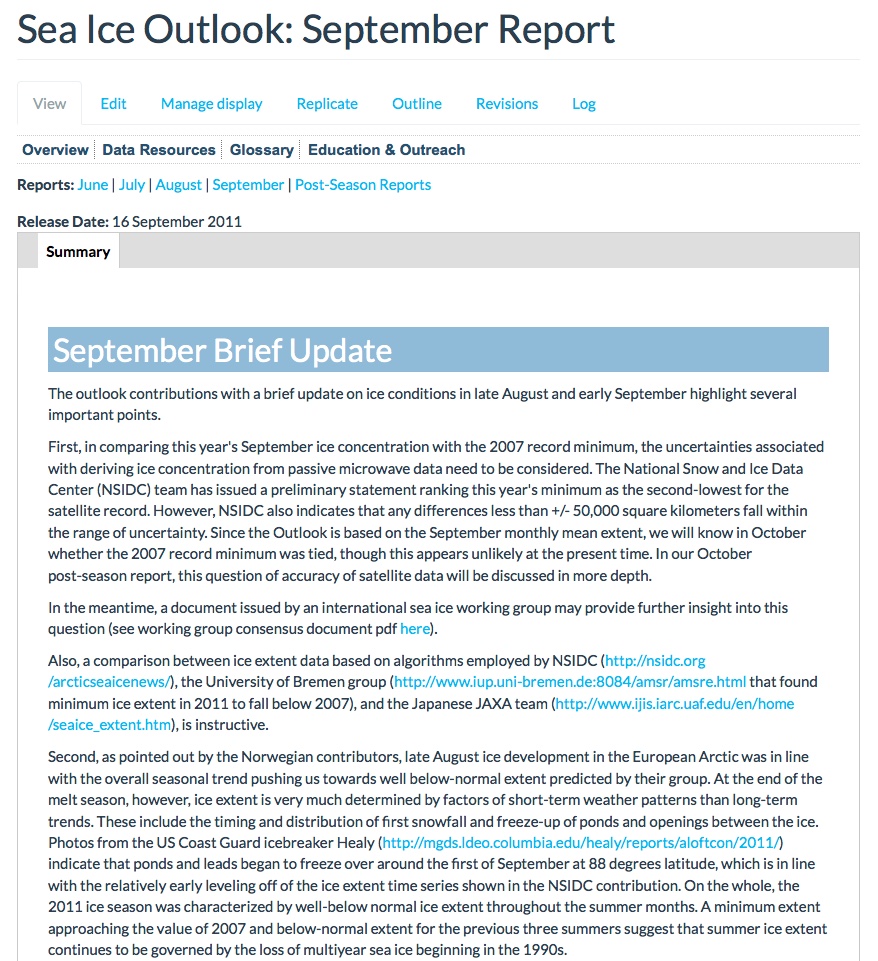September Brief Update
The outlook contributions with a brief update on ice conditions in late August and early September highlight several important points.
First, in comparing this year's September ice concentration with the 2007 record minimum, the uncertainties associated with deriving ice concentration from passive microwave data need to be considered. The National Snow and Ice Data Center (NSIDC) team has issued a preliminary statement ranking this year's minimum as the second-lowest for the satellite record. However, NSIDC also indicates that any differences less than +/- 50,000 square kilometers fall within the range of uncertainty. Since the Outlook is based on the September monthly mean extent, we will know in October whether the 2007 record minimum was tied, though this appears unlikely at the present time. In our October post-season report, this question of accuracy of satellite data will be discussed in more depth.
In the meantime, a document issued by an international sea ice working group may provide further insight into this question (see working group consensus document pdf here).
Also, a comparison between ice extent data based on algorithms employed by NSIDC (http://nsidc.org/arcticseaicenews/), the University of Bremen group (http://www.iup.uni-bremen.de:8084/amsr/amsre.html that found minimum ice extent in 2011 to fall below 2007), and the Japanese JAXA team (http://www.ijis.iarc.uaf.edu/en/home/seaice_extent.htm), is instructive.
Second, as pointed out by the Norwegian contributors, late August ice development in the European Arctic was in line with the overall seasonal trend pushing us towards well below-normal extent predicted by their group. At the end of the melt season, however, ice extent is very much determined by factors of short-term weather patterns than long-term trends. These include the timing and distribution of first snowfall and freeze-up of ponds and openings between the ice. Photos from the US Coast Guard icebreaker Healy (http://mgds.ldeo.columbia.edu/healy/reports/aloftcon/2011/) indicate that ponds and leads began to freeze over around the first of September at 88 degrees latitude, which is in line with the relatively early leveling off of the ice extent time series shown in the NSIDC contribution. On the whole, the 2011 ice season was characterized by well-below normal ice extent throughout the summer months. A minimum extent approaching the value of 2007 and below-normal extent for the previous three summers suggest that summer ice extent continues to be governed by the loss of multiyear sea ice beginning in the 1990s.


